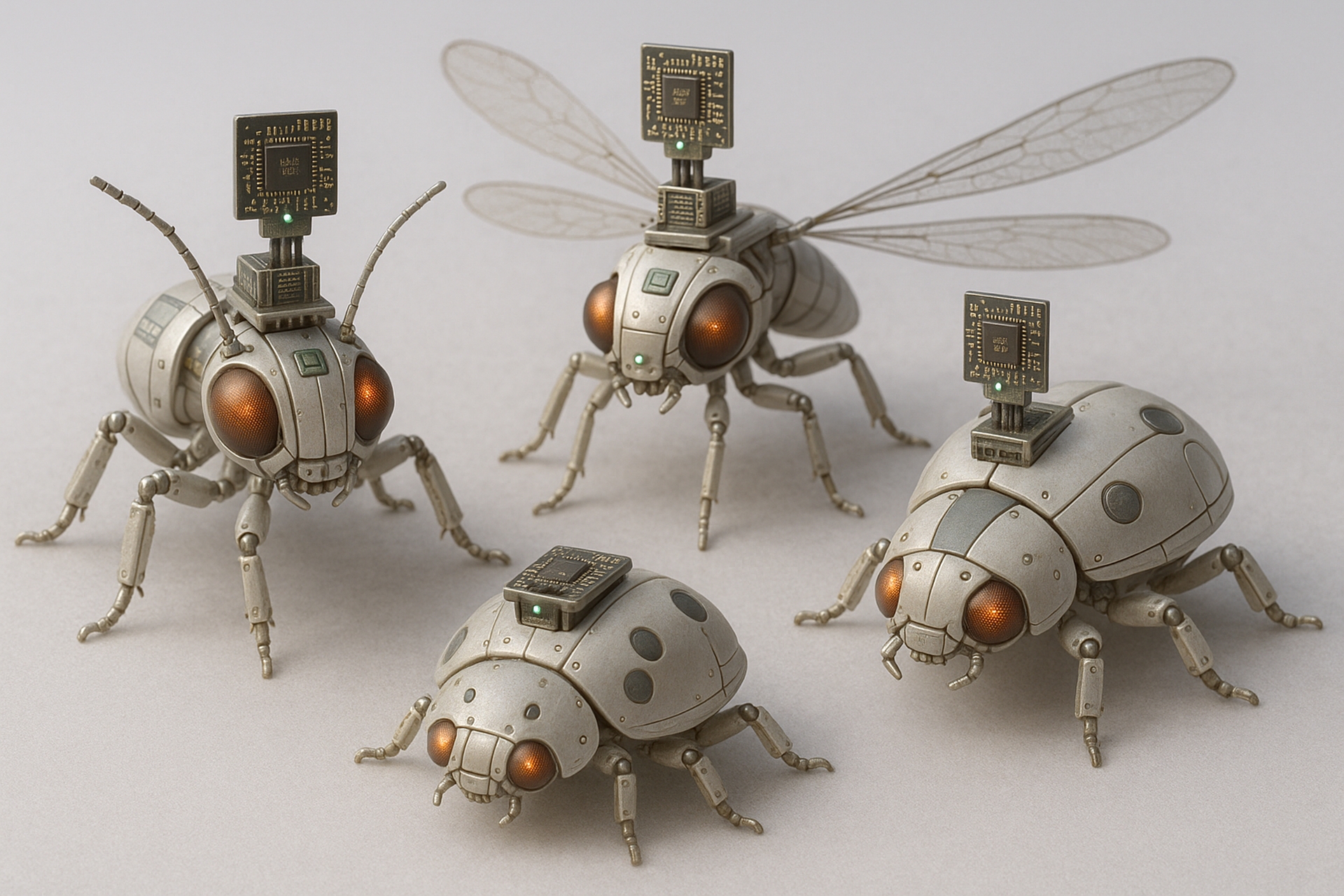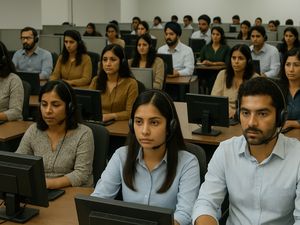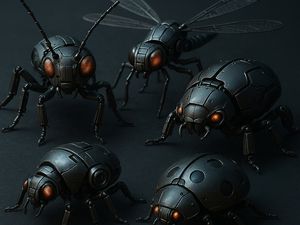

Imagine insects controlled like drones, able to reach the most inaccessible places — inside earthquake ruins, deep within pipes, or inside complex industrial installations. While this may have sounded like science fiction not long ago, today it is already a reality. Scientists around the world are conducting experiments that transform living insects into biological robots. Thanks to miniature electronic circuits, it is now possible to remotely control their movements. These cyborg insects could soon be used in rescue operations, industry, and environmental research.
How does it work?
The process involves implanting miniature electronic systems into the insect’s body, usually near muscles responsible for moving wings or legs. By sending electrical impulses, the insect’s movements can then be remotely controlled — for example, steering a beetle’s flight or a cockroach’s walking pattern.
The most commonly used insects are:
Beetles (due to their durability and ability to carry loads)
Cockroaches (highly resilient, able to move through tight spaces)
Moths (easy to control in flight)
Why is this being done?
The main applications include:
Rescue missions — insects equipped with microphones and cameras can search through earthquake rubble
Technical inspections — monitoring hard-to-reach installations (e.g. pipelines)
Environmental research — detecting pollution or monitoring conditions in areas inhospitable to humans
Military uses — although rarely discussed openly, some armies are funding research into using such insects for espionage purposes
Examples of projects
DARPA (USA) funded the Hybrid Insect Micro-Electro-Mechanical Systems programme, which developed remotely controlled moths and beetles.
Nanyang Technological University (Singapore) experimented with Bluetooth-controlled cyborg cockroaches.
University of California, Berkeley created the first smartphone-controlled cyborg cockroaches.
Ethics and controversies
While this technology has generated great interest, it also raises serious ethical questions. Does humanity have the right to manipulate living organisms and turn them into tools that obey its commands? In the case of insects, it is often argued that their nervous system is simple and their capacity for suffering is limited — but this is not definitively proven. Increasingly, discussions focus on utility versus the dignity of life in relation to projects like DARPA’s Hybrid Insect Micro-Electro-Mechanical Systems or research conducted at the University of California, Berkeley. Other researchers, such as those at Nanyang Technological University, argue that cyborg cockroaches could serve life-saving purposes in rescue operations.
However, a key question remains: is it ethically justifiable to manipulate an insect simply because it is small and biologically simple? Some voices in the academic literature warn that the development of biocybernetics may lead to similar techniques being applied to more advanced organisms, raising new bioethical dilemmas (source). Furthermore, although experiments on insects are currently allowed in most countries, there are no consistent international regulations governing such research. Some scientists are calling for clear legal frameworks for projects involving so-called insect cyborgs (source). As electronics continue to miniaturise and AI advances, this ethical debate is certain to gain increasing importance.
The future
As electronics become smaller and biotechnology advances, cyborg insects are likely to become valuable tools in rescue operations, inspections, and potentially even everyday life. Tests are already under way, using remotely controlled beetles and cockroaches to search through rubble after earthquakes or explosions. Equipped with miniature cameras, microphones, and gas sensors, they can relay crucial information from locations completely inaccessible to humans or wheeled robots.
The technology involves implanting electrodes into muscles responsible for insect movement — electrical impulses sent remotely allow operators to control their movements. This enables an operator, for example, to guide a cyborg cockroach along a set path or around obstacles. Similar solutions are also being tested in infrastructure inspection — for instance, in water pipes, ventilation ducts, or industrial tanks.
In the future, it is not unthinkable that these natural drones could also be used to monitor chemical, biological, or radioactive contamination, and even for military and intelligence purposes.





